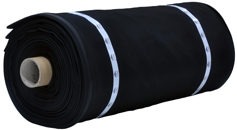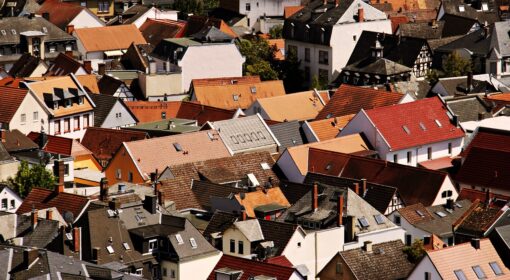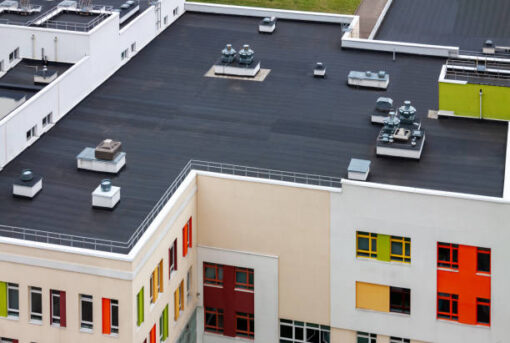EPDM roofing offers tremendous value for property owners looking for functional and inexpensive roofing solutions. Commercial properties are ideal candidates for rubber roofing for two reasons.
Firstly, because the roof is usually not seen by the public. Secondly, because EPDM does not require much maintenance or repair. In this blog we discuss EPDM roofing and why it is so interesting.

As with any material, your EPDM roofing may need some repairs every now and then. Mainly at the seams and other parts where glue has been applied (due to dehydration).
The resistance to UV radiation and extreme environmental conditions means that sporadic checks are required after installation.
You only need to check it once every few months for possible problems. Regular roof maintenance can help you keep track of the lifespan and needs of your roof.
Why EPDM roofing?
Buy EPDM not only means great value for your money. You can also easily install any additional roof features you want without any extra hassle. Like a solar panel, a roof garden or other components.
Another thing to note about EPDM roofing is that it normally appears black. However, it can easily be painted white to add a cooling effect to the roof of your home.
White roofs are not uncommon these days. Link this to a solar energy system and you can also save significantly on the energy bill of your business premises or home.
EPDM roofing: a serious option to consider
The wide range of benefits and low costs that EPDM roofing offers, make it a popular product. And although options such as tar and gravel, bitumen, TPO and PVC are more traditional, EPDM is a fantastic and feasible option for many buildings.

When considering whether this is the right roofing solution for you, keep the following in mind. It is important to remember that EPDM rubber is not the best material to use for every roof. It is mainly more effective on low and flat roofs.
EPDM vs Bitumen
Bitumen stood for years (vilt) known as the leading product for flat roofs. Until complaints started to surface about how unreliable and ineffective this roofing is.
Modified bitumen is a commonly used material for flat roofs. The bitumen felt roofing is made of three layers of planks, tar and mineral, and is laid with an open fire.

Because bitumen is laid with an open fire, this can increase the chance of leakage. Other problems that can occur with bitumen roofing include insufficient water- and backwaters, so that no moisture infiltration can occur. These can lead to roof damage, which shortens the lifespan.
EPDM can be installed in one piece, thus limiting leakage. The lifespan of EPDM is such 20 jaar. EPDM is safer due to the flame- and heat-free installation process. You should take this into consideration when asking what is better for my roof: EPDM of bitumen.





Leave a Reply